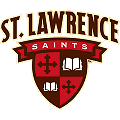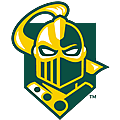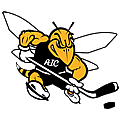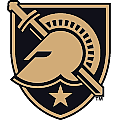On Friday, we dropped a bit of a bomb - and steered our site back towards its main focus, which we haven't been able to touch on in a few weeks thanks to all of the explosions going on in the world of college hockey (we figured, hey, another bomb probably wouldn't even be picked up on in this atmosphere).
RPI, a Hockey East school?
It sounds weird to say it. Sounds weird to think it, at first. Even once you've been over the rationales, it'll still seem bizarre. Regular games against Boston College and Maine? Regular trips to Notre Dame, even? Playing Vermont every seas... well, maybe not too bizarre. Those games against Providence and UNH won't be over the top strange either for long-time fans who remember when those teams were among the beasts of the ECAC, but given the way the last quarter-century or so has played out, the concept does seem very foreign.
First, a little background. Hockey East's split with the ECAC came in 1984, when the Engineers were just about to climb to the top of the college hockey world for the second time. The impetus for the split was, in part, a response to a rumored Ivy League breakoff. That never happened, but the eastern schools still left anyway, and had an invitation to RPI (as well as Clarkson and St. Lawrence) to join the new conference, but they chose to stay in the ECAC - much to the chagrin of head coach Mike Addesa. The invitation was extended again in the mid-1990s, but the school again chose to turn down the offer.
As mentioned last week, Hockey East expansion almost certainly revolves around Notre Dame choosing the conference. They're doing just fine at ten, but would surely love to grab the Irish and 12 certainly works better than 11 - ask the CCHA.
But why RPI? What would we get out of it? What would they get out of it? What are the risks and obstacles?
There are two ways one would need to look at this question - from RPI's perspective, and from Hockey East's perspective. Presuming a Notre Dame move to Hockey East, this is what the sides would see.
RPI's perspectiveIn FavorCompetition: The bottom line is that Hockey East is one of the elite leagues of the nation, and the ECAC just isn't anymore - it hasn't been for a good 20 years. A move to Hockey East would immediately provide RPI with a more difficult strength of schedule, making a solid team more likely to be competing for an NCAA bid at the end of the season - 9 of the league's 10 teams have been to the NCAA tournament in the last 10 years. A tougher schedule means having to play better hockey to win on a more regular basis, which is what top teams need in order to play for a national championship. For the Engineers, who won't be getting an NCHC invitation anytime soon (nor would they necessarily be looking for one), Hockey East represents the most elite conference that they could potentially have access to. Life in Hockey East wouldn't be a picnic by any stretch of the imagination - but it would provide the means and the opportunity to shoot for the stars that the ECAC just can't provide anymore.
Recruiting: It's been a fact of life for quite some time now in the college hockey world - recruits are frequently well aware of what conferences are among the best in the nation and which programs offer them the best hope not only for growth but for attention from scouts. Hockey East is the most scouted eastern league out there, which means top players and solid talents looking to attract attention are most likely to choose Hockey East programs to ply their trade. RPI already competes with many Hockey East teams for recruits, but stands at a competitive disadvantage for the very best recruits because they compete in an inferior league.
Exposure: Along with the better competition and increased attention from the professional ranks, being associated with Hockey East would provide the program and the school with an increased amount of regional exposure through the conference's television deal, and national exposure through association with a power conference.
Alumni base: For the purposes of increasing fan interest in the program, it's always best to give those who would have a natural interest the most opportunities to see the team in action, and the Boston metropolitan area is one of the largest RPI alumni bases out there, certainly the strongest with a vibrant college hockey scene.
Consider the Engineers' 2011-12 schedule - they will be in the Boston area precisely one time this season, when they play at Harvard in February (two if you count the game at Brown in January). Now, that's actually a bit abnormal, since they usually get a non-conference game or two at BU, Northeastern, UNH, Lowell, Providence, etc. to throw in there. Now consider the possible effect of the Engineers playing all of those teams in a single season, every season. Those alums will be able to come out all season, drawing a much closer connection with the program than a single game in a year's time could possibly create.
Increased attendance: Even if RPI fans are unenthused by a newer, stronger conference - and we don't think that would be terribly likely to happen - Hockey East has more teams with solid, traveling fanbases than the ECAC can claim, and that fact alone would likely lead to more ticket sales on an average night where a league game was on the docket.
Tournament: The ECAC has had issues with its tournament location for well over a decade, and for good reason - with a weaker overall profile than Hockey East, interest among the general public in the east for the ECAC has waned somewhat. Throw in the paltry number of teams that travel well - it's always Cornell, Clarkson and RPI when you ask the question - and the tournament becomes a dicey proposition no matter where it's held if you can't get those teams there, which has been the case for quite some time now. We still believe Albany is probably the best place for the ECAC tournament to be from a logistical and central standpoint, but there's nowhere the ECAC could choose to hold the tournament that would be a fair comparison to the Hockey East tournament in Boston. The excitement of the final three games of the tournament at TD Garden is currently matched only by the WCHA's Final Five in St. Paul. It's not a reason on its own, but it does sweeten the attraction.
Women's hockey: While the men's team would relish the opportunity to grow in a stronger atmosphere, a move to Hockey East would potentially bear fruit for the women's team as well. The women's game is seeking and increase in the amount of parity - and top to bottom, there may not be a conference that has more parity than Hockey East. In the ECAC, there are some exceptional teams, and there are some extremely bad teams. In Hockey East, you still have the dominant programs and the dormant ones, but the extremes are not nearly as great. It creates a more competitive atmosphere - not to mention that there are fewer teams in Hockey East than there are in the ECAC. RPI would still have to tangle with BC, BU, and UNH as opposed to Cornell, Harvard, and Dartmouth, but the autobid would be more of a possibility in the smaller league.
Small school security: One of the more startling elements of the western splitting going on is the stark manner in which the "small schools," defined as those institutions who are not full Division I members, have been treated. Each western D-I school with the exception of Western Michigan and Bowling Green is now a member of one of the two new power conferences (and Notre Dame, of course, but they're a special case since they're going to end up somewhere secure). Every small school, with the exception of Duluth and Colorado College, are among the "leftovers." It's entirely possible that, generally, small schools are going to need to fight to be in a position to compete with Division I schools, and this would be a step in that direction - security for the future.
Against
Traditional rivalries: RPI has played in a league of some sort with Clarkson and St. Lawrence for over 60 years. That's not something you easily walk away from, especially when one is a long-time rival. Throw in the budding rivalry with Union, and it's very clear that RPI has some deep roots in the ECAC. That said, leaving these teams behind isn't completely saying goodbye. Union and RPI already sacrifice a non-conference game every year to play each other a third time, there's no reason that game couldn't continue. And just as much as the Engineers have certain teams outside the conference that they play on a regular basis, there's no reason why regular games with Clarkson and St. Lawrence couldn't be part of the mix.
Ivy League connections: There's little doubt that the RPI administration cherishes the fact that Harvard, Yale, Princeton, Dartmouth, Brown, and Cornell come to campus once a year. It's a little something extra to trumpet when you're talking about athletics and the association with the Ivy League, as tentative as it might be, is pretty obviously something that the powers that be enjoy - it's long been held as one of the reasons they prefer to call the school "Rensselaer," that single name being indicative of an elite status.
Academic profile: The ECAC consists of 12 very elite, mostly very selective schools. If nothing else, the league and its members pride themselves on that fact. Leaving the ECAC would mean moving to a conference in which half of its current members are public schools, and even some of the private schools of the conference have a much higher enrollment than RPI.
Glass ceiling: The glass ceiling in this case isn't gender based, but power based. In 26 years, there have been a grand total of four teams that have finished the regular season in first place in Hockey East - they are known as the "Big Four," and Maine hasn't done it since 1995. Notre Dame may threaten to crash that party, but RPI probably wouldn't in the near future. The conference tournament isn't really that much better - Providence in 1985 and 1996, and Northeastern in 1988 are the only tournament champions outside the "Big Four."
Hockey East's perspective
In Favor
History: No other potential Hockey East program out there, even Notre Dame, can claim a national championship - RPI claims two, as well as a history that dates back over 100 years. The Engineers carry with them that bit of gravitas over other prospective candidates, for whatever that's worth; roots that can be pointed to as part of a long-standing commitment to the sport. There may be questions about the future of hockey at a number of smaller schools, but hockey is an integral part of the identity of the Institute, perhaps more so than any other candidate out there.
Traditional connection: There's been a pretty firm connection between RPI and the majority of Hockey East. Not only were the Engineers former league-mates with many of the teams in the conference, they also play many of them on a regular basis. In fact, the Engineers have played every team in the conference at least once since 2006, and have faced all but Merrimack, Providence, and UMass-Lowell in the last four seasons. Rare is the season where an RPI-BU game is not on the schedule (though that will happen in this coming year, there is supposed to be a game in 2012-13), and Northeastern and UNH are both common opponents. This compares positively with Quinnipiac, who have only played half of the league (and none of the power programs) in the same time frame.
Facilities: Houston Field House isn't the newest building on the block, but then again, it wouldn't be the oldest in the league, not when Northeastern has the oldest indoor hockey rink on the planet - something they are quite proud of, so it's not like having an old building is an automatic hindrance anyway. HFH, as we've well noted here, is undergoing a very solid facelift, with a lot of the elements already in place like a new scoreboard and new locker room facilities. Capacity-wise, it has ample space to welcome the larger fanbases when their team comes into town, reaching about midway on Hockey East's current list of rinks by how many spectators can be squeezed in.
Resurgence: Ask around in the college hockey world, and people will tell you that RPI is a program in the midst of a renaissance under the leadership of Seth Appert and James Knowlton. You only need to talk to either man for a short time to understand that both are driven for success. Even the attitude of the RPI administration seems to have turned more toward support for the program as well. Combined with the program's history, this aspect certainly is something that would not be overlooked - just look at Western Michigan, which apparently has a standing invite to the NCHC. Just a year ago, it's unlikely the Broncos would have even been in the discussion, but a strong campaign from the WMU administration to redouble support for hockey, combined with an outstanding season last year, has Western drawing attention. The same could well be said for RPI.
Against
Geography: This isn't an overly huge concern, especially since we're talking about a situation in which the conference is accepting a team from Indiana of all places, but Hockey East has defined itself in the past as a conference of New England teams. Now, RPI is the closest program to New England - you can be there in about 25 to 30 minutes if you hustle - but there are other options out there that wouldn't require the conference to step further outside of niche. Most notable among these options are Holy Cross and Quinnipiac, the latter of which would establish a foothold in the state of Connecticut, the only New England state where Hockey East doesn't have a men's team.
Quinnipiac would also offer access to the elusive New York City market, although the degree they can actually deliver any tangible benefits of that untapped area is highly questionable. RPI being in the Albany market doesn't exactly add a gold star to the resume, but it is what it is.
Small school: Hockey East is burgeoning with Division I programs - of the current five conferences, none boast more fully D-I schools than Hockey East at 80% of its present membership (AHA and ECAC 66%, CCHA 64%, WCHA 33%). Though that will change when the Big Ten gets underway, the formation of the two new western leagues that are largely filled with big schools may put RPI at a disadvantage when it comes to marketing itself to a power conference as opposed to a D-I school like Quinnipiac or Holy Cross. That said, there's clearly room for small schools in these power conferences, especially those with an established history of excellence, as Minnesota-Duluth and Colorado College were invited to join the NCHC.
Compact conferences: With all of this new horse-trading going on out west, the trend is now on smaller conferences - only six in the Big Ten and the NCHC, and likely a similarly limited number in the WCHA and CCHA if those leagues are able to draw in/hold in enough teams to stay solvent. The eastern leagues now look packed by comparison, and while there could now be four conferences with autobids in the west with a limited number of teams fighting for each of those autobids, there are only three in the east, all chock full.
---
It's likely that the first feelers on membership may already have been put out by one side or the other (or both), especially given the swirling cloud of reorganization that hover over all of college hockey. The time is now for RPI to evaluate its position in the college hockey world, what it wants to achieve, and the best methods for achieving those goals.
The ECAC has been our home for 50 seasons. It is a great league that has provided great memories. The creation of even greater memories, however, will likely require a change, and we believe that Hockey East could very well be the change that would be needed to chase the dream of a third national championship.
If the situation presents itself, we believe our school should give very serious consideration to a move to Hockey East, given the potential benefits to both sides, which truly seem to outweigh the negatives.










